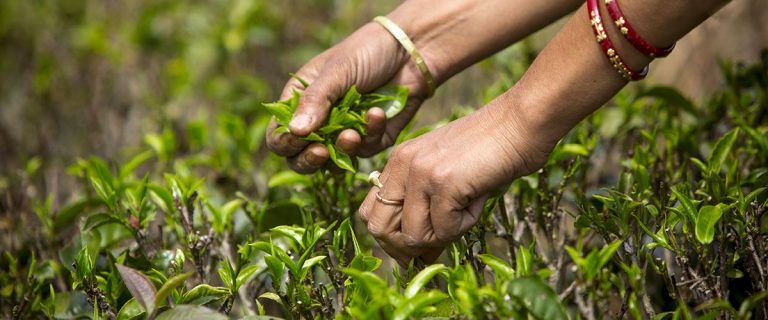Just like fruits and vegetables, teas also have a specific season to be harvested in. The delicacy, aroma and flavor are affected by the weather conditions. With longer exposure to sunlight, spring leaves have an increased concentration of catechins, adding to its astringent taste. For these reasons spring teas are seen as a class of teas with unique flavors that attract a loyal following.
Spring teas are also known as First Flush teas as they are grown and harvested during the cooler months of spring and are the first of a year of teas. The youngest and most tender leaves and buds of the tea plant are plucked to make the First Flush teas. Its delicate and subtle flavors are prized all over the world and these teas make some of the best teas in the world.
A guide to flavorsome spring teas
Usually valued for the sweet aroma, mild flavors, and lingering aftertaste fresh spring teas are usually lighter in color. Some teas from the spring tea harvest are delicate and floral while the others have a distinctly sweet aftertaste.
Whether it is green or white tea, the early spring leaves are subtle in flavor. Tea growers are quite cautious with the first harvest, as they focus on picking, rolling, and firing the tea leaves with utter precision.
Since fresh tea is in high demand and in limited supply, spring teas are the most valuable all year long. In Japan and China, a pound of early spring tea harvest can cost an extravagantly high sum.
The spring tea rush includes fragrant yet crisp varieties such as the First Flush Darjeelings from India, the Chinese Longjing, the Japanese Sencha, and the windy High-mountain oolongs from Taiwan
Drink a Darjeeling
February-March is the time of tea harvests in Darjeeling when the freshly plucked leaves are carefully characterized by fragrant, fresh, and floral aromas. Fed by brief rainfall, the tea gardens of Darjeeling in India provide the best ‘First Flush’ Darjeeling teas.
Since they are grown at different altitudes, and in varied soils and climates, the Darjeeling First Flush tea is unique. The distinctive Darjeeling black tea has hints of floral accents, is citric, and has a sprig of astringency. It is quite a treat to try this spring tea and see what the excitement is about.
First Flush tea benefits
Want to feel instantly rejuvenated? Sip a cup of tea that is made from First Flush leaves, it will energize your body and mind unlike any other.
Go green with a Chinese Longjing
The best spring teas are picked mid-February on the Chinese New Year’s Day or on Qing Ming in early April. The tea leaves harvested just before the spring rains start has unique characteristics.
The leaves are harvested before the rains set in as they are considered to have an undiluted flavor. Two leaves and a bud are gently pinched off the stems. The tea is strongly valued for its aroma and flavor described as reminiscent of chestnuts and shoots.
China’s popular green tea, the Longjing, is a good example of First Flush green tea, it is rich with crisp spring flavors and no other word can describe it better than ‘fresh’.
Breathe in the refreshing Oolong
Partially oxidized tea is grown best in Taiwan at high altitudes. The brew is potent, buttery, and thick but as fresh as a gust of mountain air. Oolong tea is brewed from the leaves harvested during late winter and spring. The flavor is more robust and tends to have a more flowery tinge.
Take a swig of Sencha
A common variety of green tea in Japan, the leaves of the sencha are plucked as soon as they have completely opened in the spring. The tea is often sold and brewed in the first weeks of harvest.
These leaves have the highest levels of antioxidants when compared with the yellow or white tea leaves, making sencha an essential health drink. Brew the leaves immediately to experience the full rush of fruity and grassy flavors.

Comments are closed.